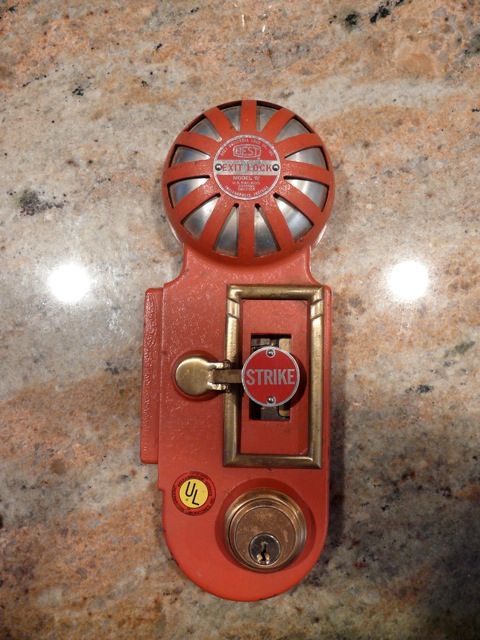
Picked up a Best Universal Lock Company emergency exit alarmed lock from a curiosities shop today. Didn't work when I bought it, but since it's an all-mechanical system, figured I could bring it back to life. Not much online about these outside of a couple eBay auctions, but I was able to repair it, and in the process recorded the following observations.
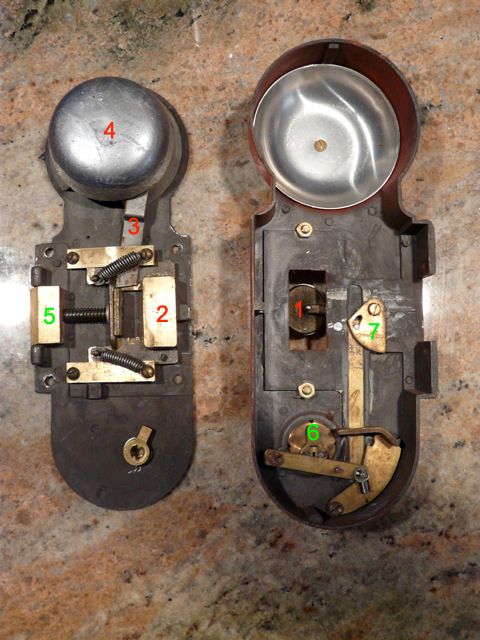
I've outlined the following components in the photo above:
Emergency Override Components (Red)
1. Reverse side of strike
2. Strike's contact pad and associated spring-loaded carriage
3. Alarm bell switch arm
4. Wind-up alarm bell (bell winds up clockwise, and is locked into place by loading the carriage (component 2))
Key Operation Components (Green)
5. Latch
6. Mortise cylinder. Tailpiece operates mechanism that turns…
7. Lever that throws or retracts latch (component 5)
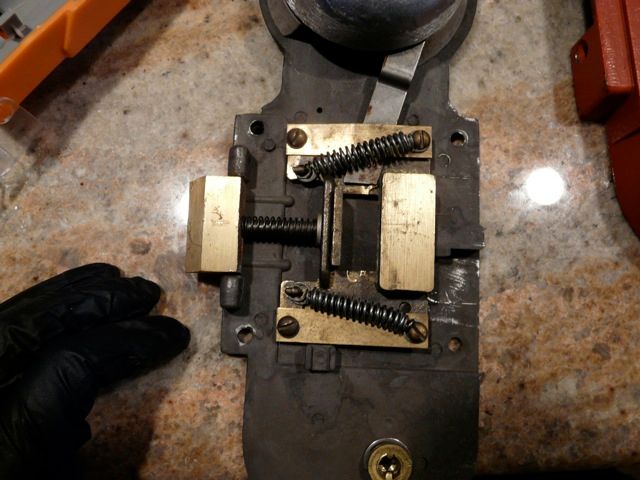
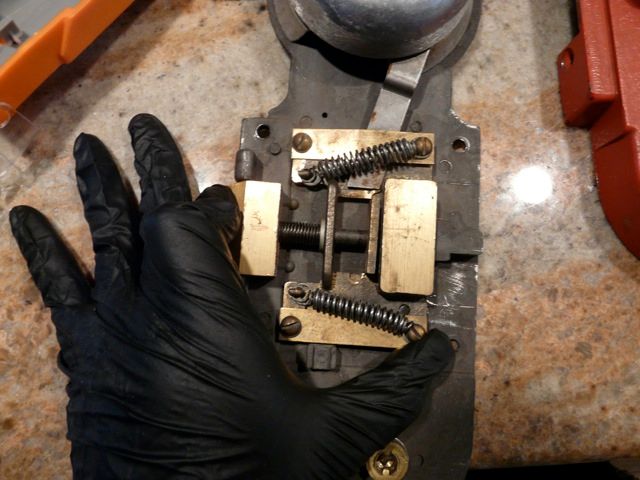
The mechanism is loaded by pulling the carriage assembly (2) to the left, and latching two notches underneath the pad onto a post. This aligns the pad with the strike's window. To replace the top case, fit the side opposite the latch together, then push the latch (component 5) inward until the top case can fully seat.
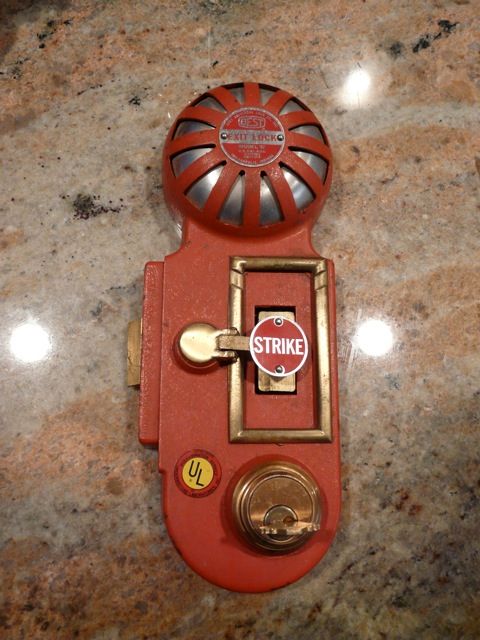
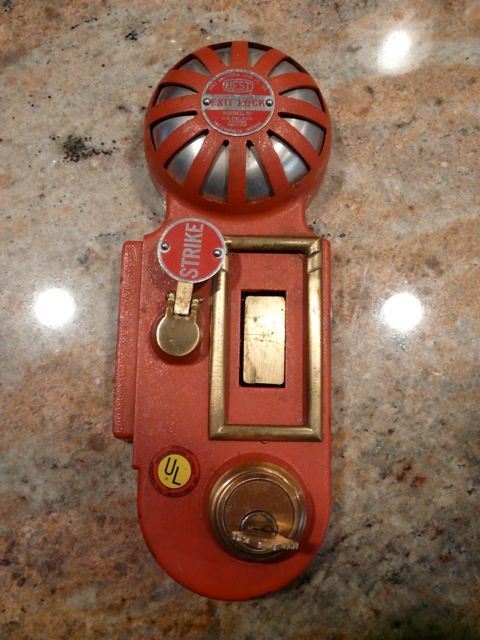
The latch is attached to component 2, but because it's separately spring-loaded, the door can be operated by a separate mechanism (6/7) without releasing the carriage and triggering the alarm.
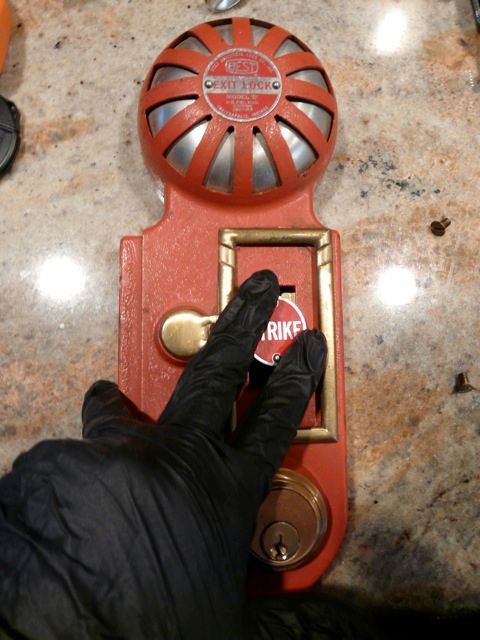
However, when the strike button (1) is pushed, the glass that's normally located between the strike and the contact pad is broken. When the contact pad (2) is pressed and released, the spring-loaded mechanism kicks to the right, overriding the locking mechanism (6/7) and retracting the latch (5). As the carriage retracts, the bell switch arm (3) is thrown, releasing the wind-up bell (4). While the above photo doesn't have sound (of course), the bell was sounding loudly in this pic, something my wife was a surprisingly good sport about.
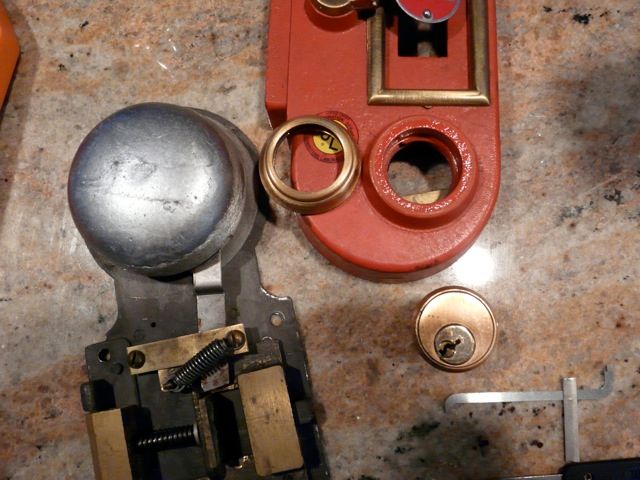
The specific lock I picked up today was missing its glass panel that's normally located between the strike and the strike pad, and did not come with a key. The mortise cylinder is retained with a small grub screw. After taking apart the case, I removed this screw and took out the cylinder. This particular 6-pin SC4 cylinder was far too corroded to pick (even with no tension, could barely move the pins). After taking a predictably failed run at picking it, I shimmed the cylinder open and rekeyed it after cleaning to an existing Schlage SC1 key I had laying around (the original cylinder had only 5 of its chambers pinned too).

After replacing the glass with a thin sheet of opaque, flexible plastic and cleaning up the case and alarm bell, the lock and alarm are fully operable. I'm missing the latch strike for this (not that I have any intention of putting this into use), but am glad I was able to bring this back to life. Will probably replace the SC4 cylinder with a true Best SFIC mortise cylinder at some point, and once I dig up my red enamel paint, will reproduce a glass insert's "Emergency Exit/Break Glass" lettering on the plastic.




